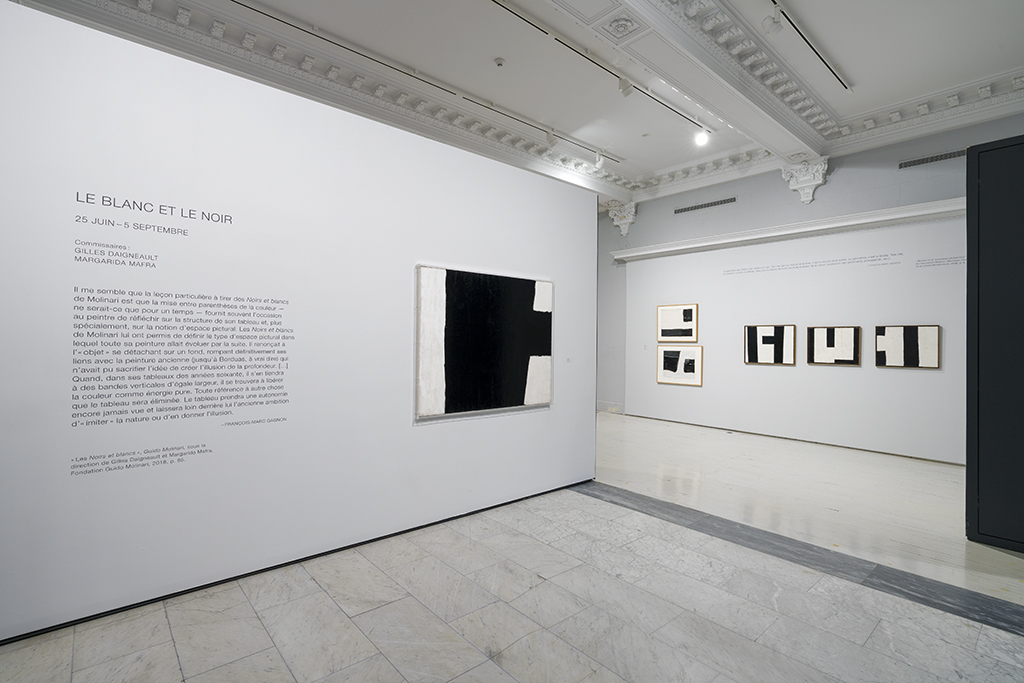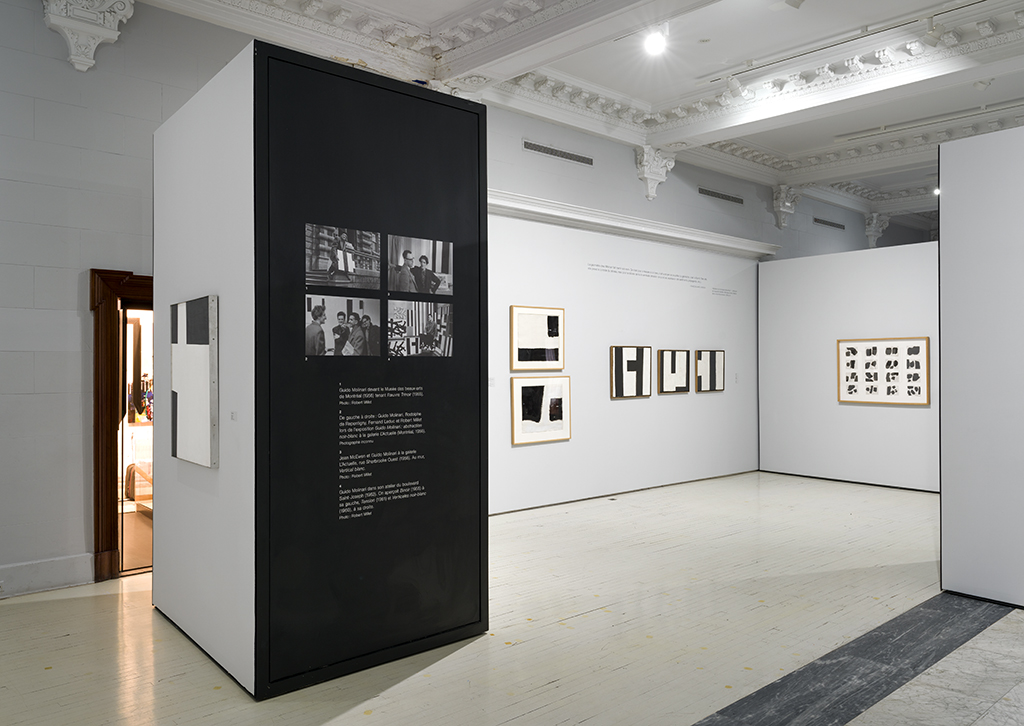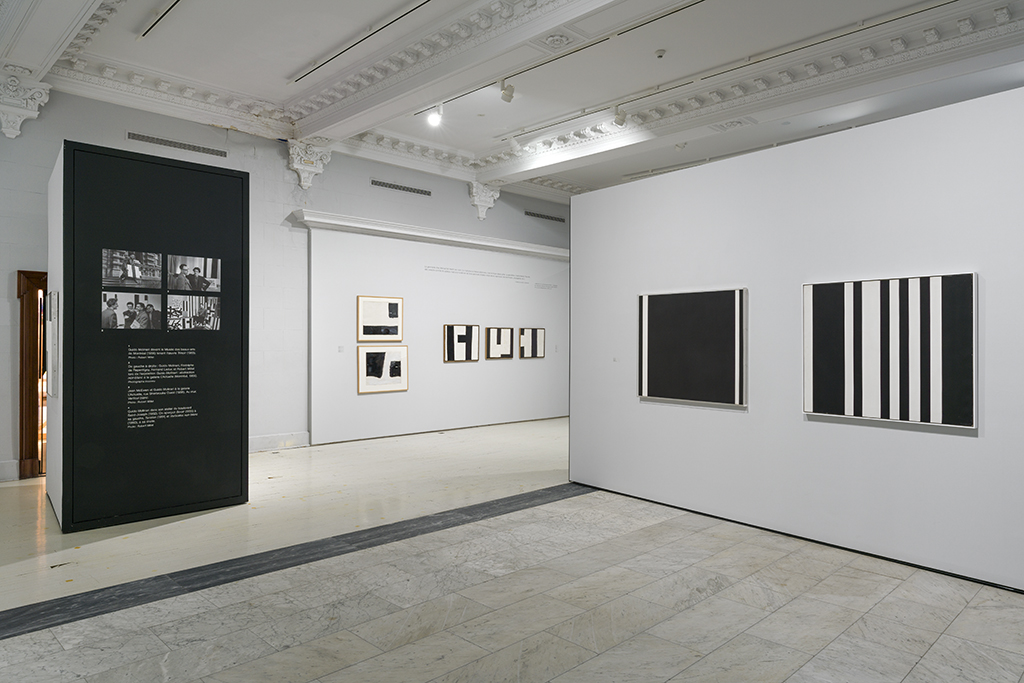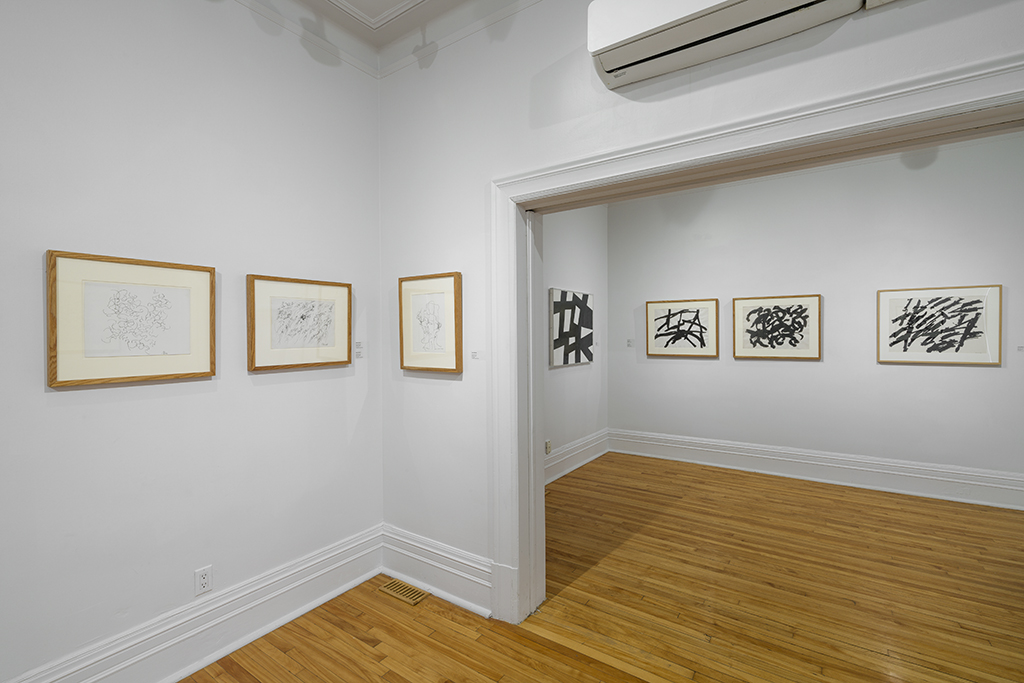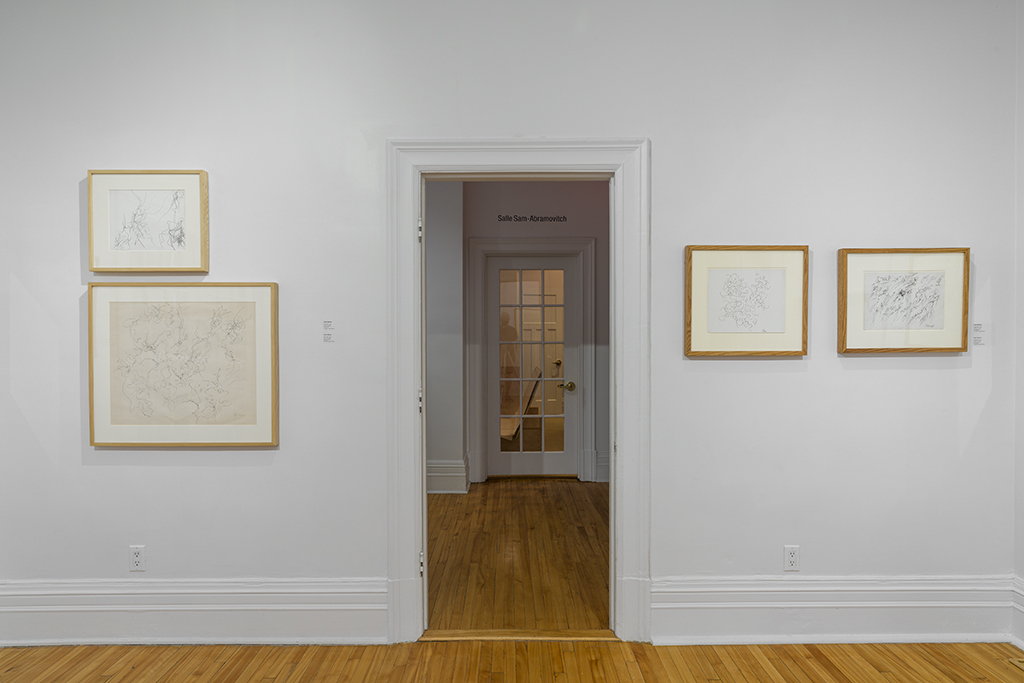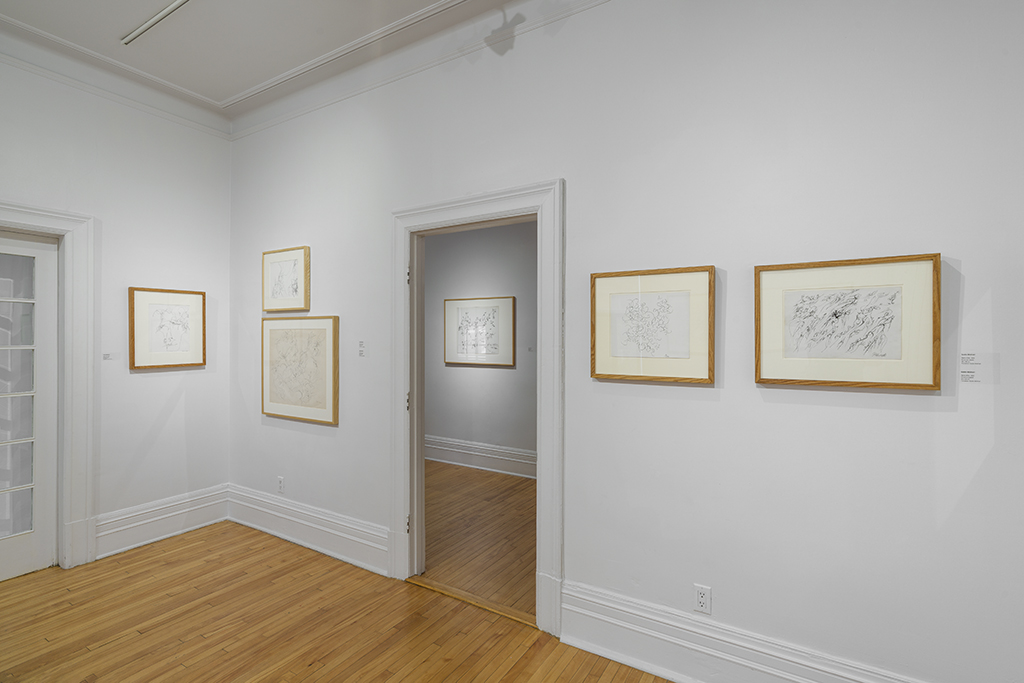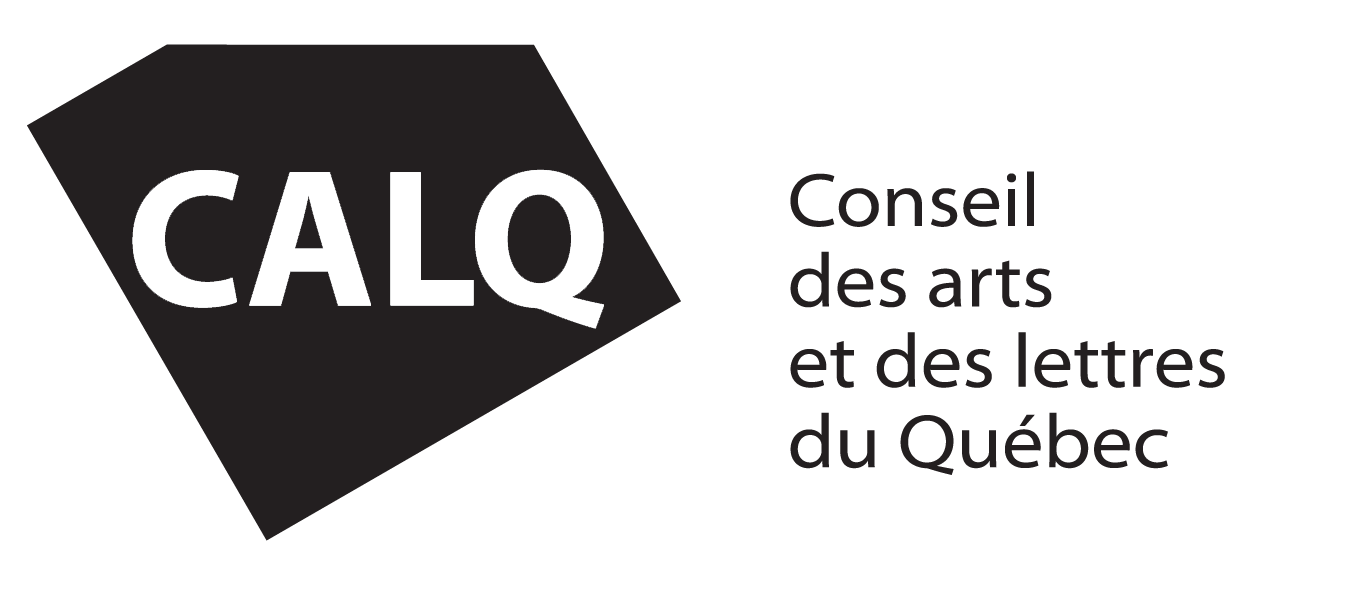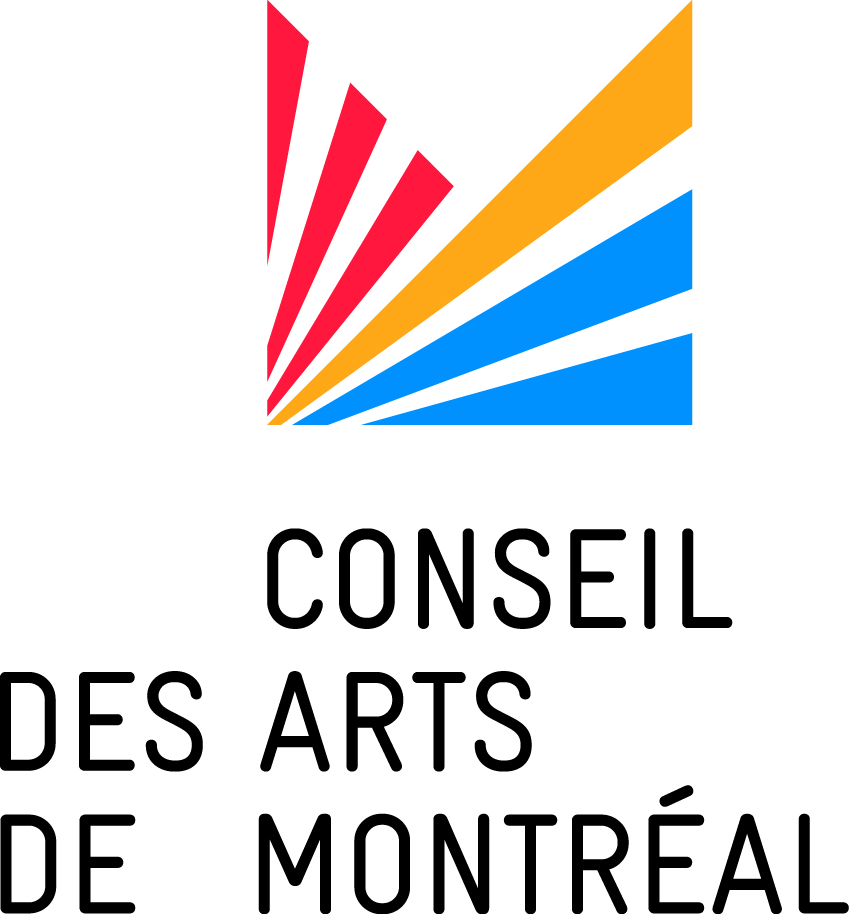From June 25 to September 5, 2021 the Foundation presented an exhibition that brought together black and white works by Molinari, mostly dating from the 1950s. The core of the exhibit is made up of ten austere geometric paintings in black and white that the artist presented at his first solo exhibition of paintings at his gallery, L’Actuelle. There, Molinari showed, as if to set the record straight and resurrect the rebellious artist well-known since his works painted “in darkness” in 1951.
Of course, both the public and the art milieu were reticent at first, and even Molinari had his doubts at times regarding the merits of this work. But as time passed, it was generally held that this 1956 series truly incarnated the principles of the Plasticiens Manifesto. Major art historians like Serge Lemoine and Bernard Teyssèdre, both connoisseurs of American abstract art, soon recognized the absolute originality of Molinari’s enterprise. Lemoine: “His approach was unparalleled in North American art at the time. When, later on, I discovered the black and white paintings he’d painted in the fifties, I realized they were foundational creations, in their use of absolute contrasts, their total reversibility, and in the extreme simplification of the means employed: the search for pure rhythm.” And Teyssèdre: “ No one knew whether the black‑and‑white works he exhibited at age twenty‑three, in a show at L’Actuelle Gallery, were actually “paintings,” as their significance only became apparent ten years later with the development of Minimalism in New York. “ It’s not surprising, then, that in 1967 Molinari decided to exhibit these iconic works in New York City, at the East Hampton Gallery, under the (somewhat ironic) title Minimal Paintings of 1956.
In addition, our exhibition will include works by Molinari that bear witness, in part, to an exclusive presence of black in certain productions, with special attention to drawings from the same period, opening up another facet of the artist’s work. Molinari produced nearly 1,000 works on paper during the 1950s; his work in drawing was the subject of a major touring exhibition in Canada in 1981. Most of the drawings exhibited have also been part of the major exhibitions of Molinari, since its first presentation individual at L’Échourie in 1953 until his final retrospectives of the nineties at the Musée d’art contemporain de Montréal and in Europe.
True, these very free and inspiring graphic pieces at first indicate an expressionist Molinari, closer to the poetry that he practised throughout his life; but drawing was also a key part of his construction of a two-dimensional universe and held a prominent place in all his major exhibitions. Its discourse was not distinct from that of painting, as indicated by art historian David Burnett at the start of his penetrating analysis of the corpus of drawings: “What is presented is a limited structure of optical ambiguity, a reversibility between the black and white in which neither gains final dominance. There is no division between figure and ground for the whole is both figure and ground.”
Read the exhibition flyer below:

